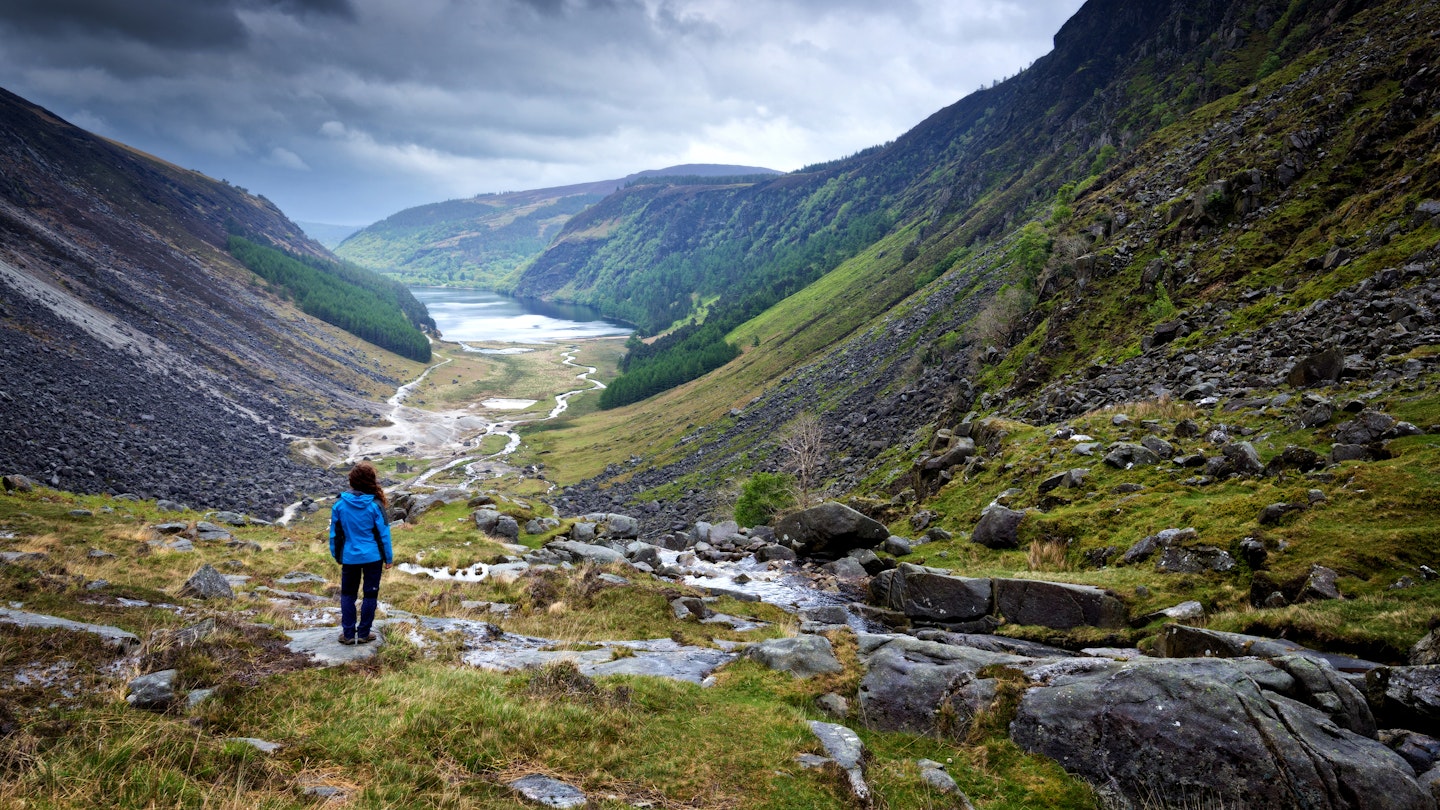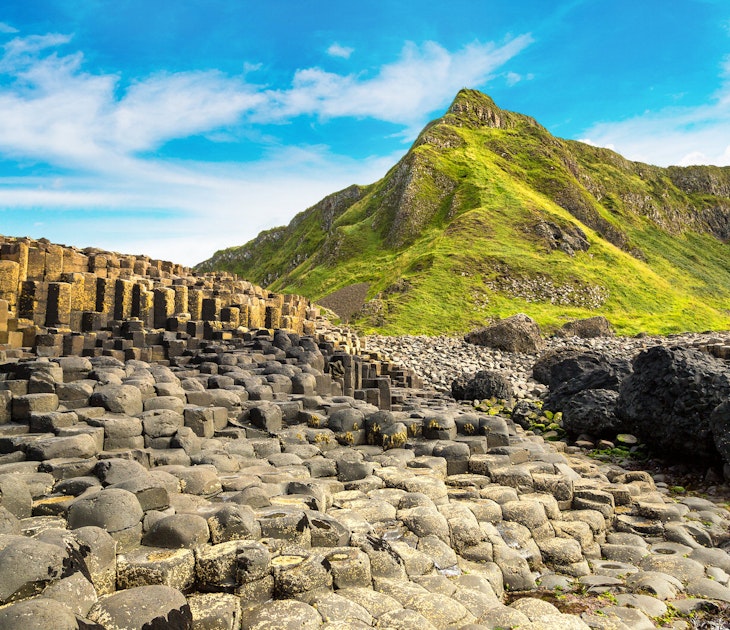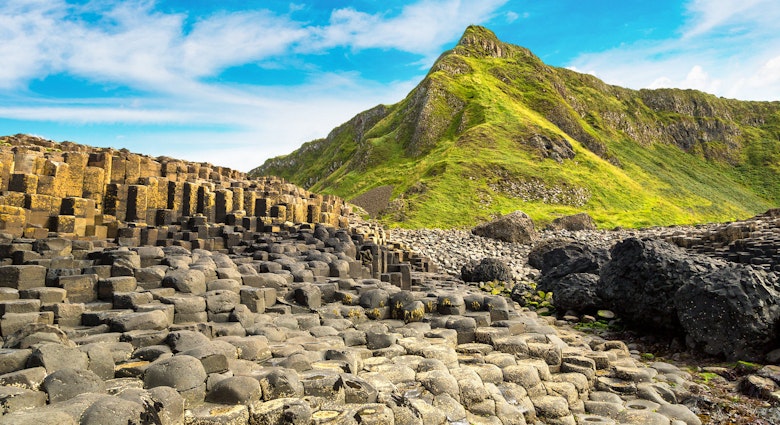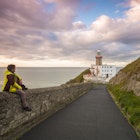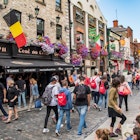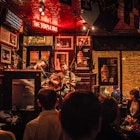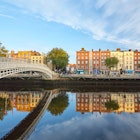Ireland's four liveliest cities – the culture-packed hubs of Dublin, Cork, Galway and Belfast – teem with fascinating museums and galleries, fabulous food and drink scenes and legendary live music and nightlife. Once you’ve taken in all the urban action, escape into glorious landscapes harbouring ancient sites, picturesque towns and traditional Irish villages sitting just outside the city limits.
Dublin
Brú na Bóinne
Striking out from Ireland's capital, the vast Neolithic necropolis Brú na Bóinne (the Boyne Palace) lies 50km north in County Meath. Predating Stonehenge by over 1000 years, this Unesco World Heritage site is home to several passage tombs and ancient monuments including Newgrange, Knowth, and Dowth. These were the largest manmade structures in Ireland until Anglo-Norman castles were built 4000 years later. With white round stone walls spanning 80m in diameter and topped by a 13m-high grass dome, Newgrange’s inner stone-lined chamber aligns with the sun every year during the winter solstice. Knowth contains extraordinary passage-grave art, and while Dowth's tombs are inaccessible, you're free to explore the surrounding site. Shuttles run to the tombs from the Brú na Bóinne Visitor Centre, which has interactive exhibits on prehistoric Ireland. Countless other ancient burial mounds and standing stones are located nearby.
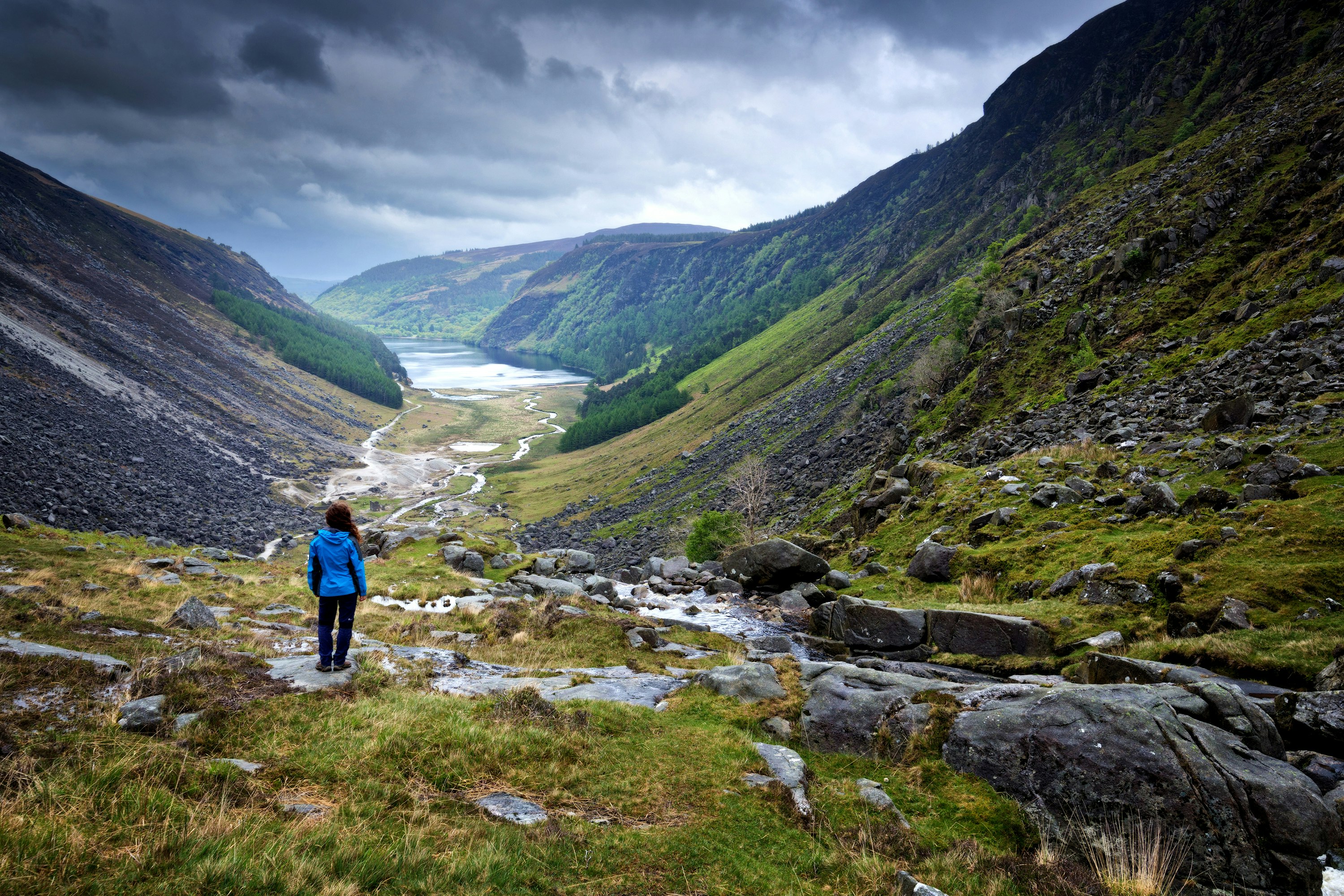
Glendalough
In the invigorating Wicklow Mountains, some 70km south of Dublin, is enchanting Glendalough (from the Irish Gleann dá Loch, meaning the ‘Valley of the Two Lakes'). Bring your hiking boots to explore here. To the east of the Lower Lake is the site of the monastery founded by St Kevin in the 5th century. Although it fell into ruin from 1398, remains include a superbly preserved 10th century round tower, a cathedral dedicated to St Peter and Paul, and St Kevin’s Kitchen (a church). Reached by a 1.5km walk, the Upper Lake has more remains on its southern shore, including the 11th century Romanesque Reefert Church, and the cave where it's thought St Kevin lived.
Powerscourt Estate
En route between Dublin (45km) and Glendalough (28km), it's well worth stopping at Powerscourt Estate. Surrounding a Palladian mansion, the 20-hectare landscaped gardens were originally laid out in the 1740s. In the 19th century, horticulturalist Daniel Robinson added rambling walking paths, hidden hollows, walled gardens, statuary and sweeping terraces overlooking Wicklow's Great Sugarloaf Mountain. The estate's precipitous Powerscourt Waterfall is Ireland's highest at 121m.
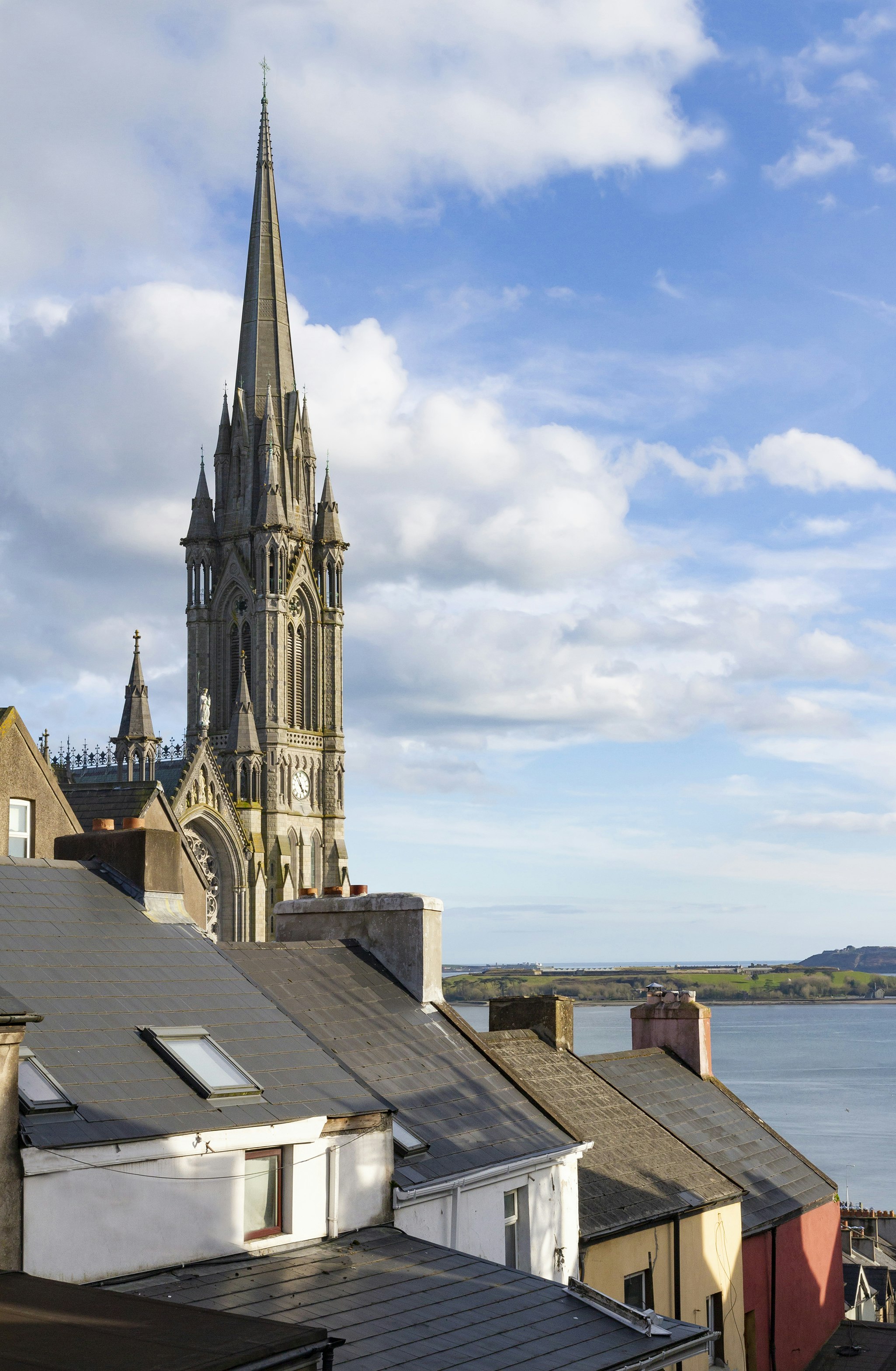
Cork
Cobh
Situated 23km southeast of Ireland's 'second city', Cork, Cobh (pronounced 'cove') sits on the southern side of Great Island (linked to the mainland by causeways). The colossal French Gothic St Colman's Cathedral looms above the harbourside town's brightly painted buildings. In the devastating Famine years, Cobh was the departure point for emigrants, whose harrowing journeys are vividly recounted at the Cobh Heritage Centre, The Queenstown Story. In 1912, the Titanic docked here before its ill-fated Atlantic crossing; the poignant museum Titanic Experience Cobh is set in the original White Star Line offices. Ferries depart Cobh for Spike Island, an 18th-century artillery fort that served as a prison during the Irish War of Independence and again from 1984 to 2004; guided tours lead you around the highlights.
Midleton
Save an outing to Midleton, 24km east of Cork, for a Saturday morning, when you can catch the Midleton Farmers Market in full swing. Beech wood–smoked salmon from nearby Belvelly Smokehouse is a must-try; you'll also find wonderful cheeses, breads, preserves and other delicacies. While you're in town, drop by the Jameson Experience, in a restored 200-year-old whiskey distillery, which has tastings and tours.
Kinsale
From Cork, a quick 27km zip south brings you to the port town of Kinsale. After strolling its narrow, winding streets lined with independent shops and its boat-filled harbour, explore the mighty star-shaped 17th-century fortress Charles Fort. The best way to reach it is via the coastal Scilly Walk, a 6km return trip from the town centre. Make time to dine at one of Kinsale's exceptional restaurants, such as seafood specialist Fishy Fishy.

Galway
Connemara
Along the Wild Atlantic Way on Ireland's rugged west coast, the hauntingly beautiful Connemara region unfolds northwest of bohemian Galway. Framed by scalloped beaches and fishing villages, its interior is a patchwork of bogs, valleys, slate-toned lakes and peaks including the quartzite Twelve Bens mountain range; several are enclosed within the Connemara National Park. Seascapes unfurl along the Sky Road, a 15km driving or cycling loop from Connemara's quaint 'capital', Clifden. Another notable highlight is a visit to Kylemore Abbey, a 19th-century neo-Gothic monestary located one hour outside of Galway.
Aran Islands
Offshore, linked by ferry and prop planes to Connemara, with shuttle-bus connections from Galway, the three rocky, windswept Aran Islands – Inishmore, Inishmaan and Inisheer – preserve their local traditions and Irish language. Laced with drystone walls, these little-populated islands shelter extraordinary historic sites such as Inishmore's clifftop Dun Aengus fort, dating back over 2000 years. In summer, there are also ferries from Doolin in the Burren.
The Burren
South of Galway in County Clare, the Burren's otherworldly limestone moonscapes, former sea beds forced up by seismic shifts in the earth's crust some 270 million years ago, blaze with wildflowers in spring. Hiking in this geological wonderland is sublime. Villages in the area include Doolin, famed for its trad music pubs and close to the surf-pounded Cliffs of Moher, and delightful Ballyvaughan on Galway Bay's southern shore. Local artisans produce everything from goat's cheese to jam and chocolate, as well as perfumes, candles and soaps inspired by the Burren's wildflowers.
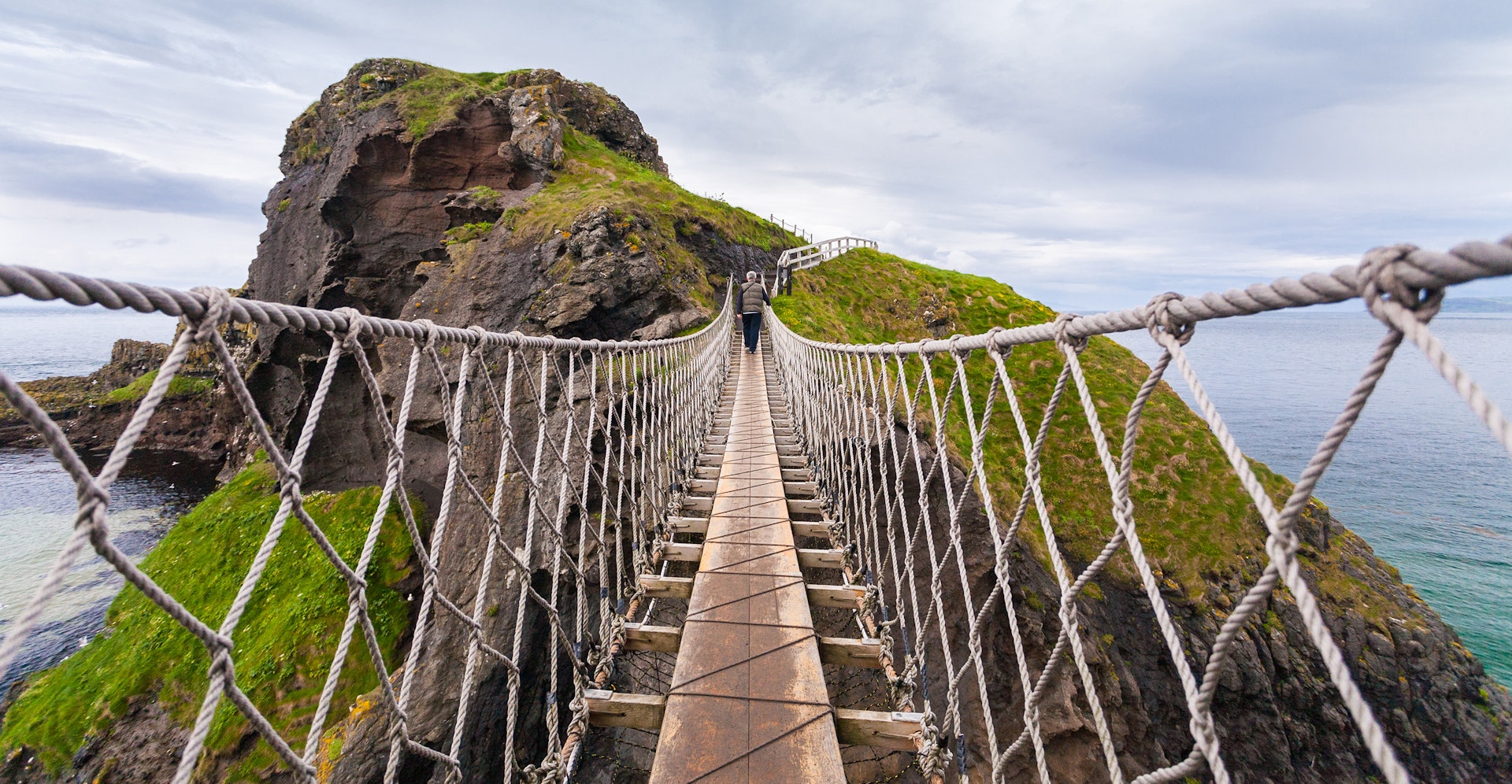
Belfast
Giant's Causeway
More extraordinary geology can be seen at the Giant's Causeway, 60km north of Northern Ireland's buzzing capital Belfast. According to legend, these 40,000 hexagonal basalt columns were built by mythical giant Finn McCool to fight his rival Benandonner in Scotland (in fact they were formed by cooling lava 60 million years ago). The Unesco World Heritage-listed site is the terminus of a bracing 16.5km hike to/from the vertiginous, swaying Carrick-a-Rede Rope Bridge. These are just two attractions along the scenic Causeway Coastal Route that’s best explored over two to three days.
Navan Fort
Pre-Christian history is palpable at Navan Fort, 43km southwest of Belfast. Known as Emain Macha in Irish, it was Ulster's pagan nerve centre from around 1150 BC until the arrival of St Patrick, who based himself nearby (today Ireland's ecclesiastical capital, the little cathedral city of Armagh, 3km to the east). A major archaeological site, Navan Fort has a main circular earthwork enclosure stretching 240m in diameter, enclosing a smaller circular structure, and an Iron Age burial mound. The interpretive Navan Centre has a recreated Iron Age settlement.
Hillsborough
Just 19km south of Belfast, genteel Hillsborough is synonymous with the late 18th-century Hillsborough Castle, the British monarch's official Northern Ireland residence. Guided tours provide historical context; its gardens incorporate ornamental lawns, waterways, woodlands and glens. Close by, Hillsborough Fort was built as an artillery fort in 1650 by Colonel Arthur Hill (hence 'Hillsborough'); it was remodelled as a Gothic-style tower house a century later. Originally a Georgian market house, the Hillsborough Courthouse – which operated as one from 1810 until 1986 – now hosts exhibitions. An equally compelling reason to visit Hillsborough is its trove of gastropubs, not least the outstanding Parson's Nose, overlooking Hillsborough Castle's lake.
Lonely Planet has produced this article and video for Tourism Ireland. All editorial views are those of Lonely Planet alone and reflect our policy of editorial independence and impartiality.
